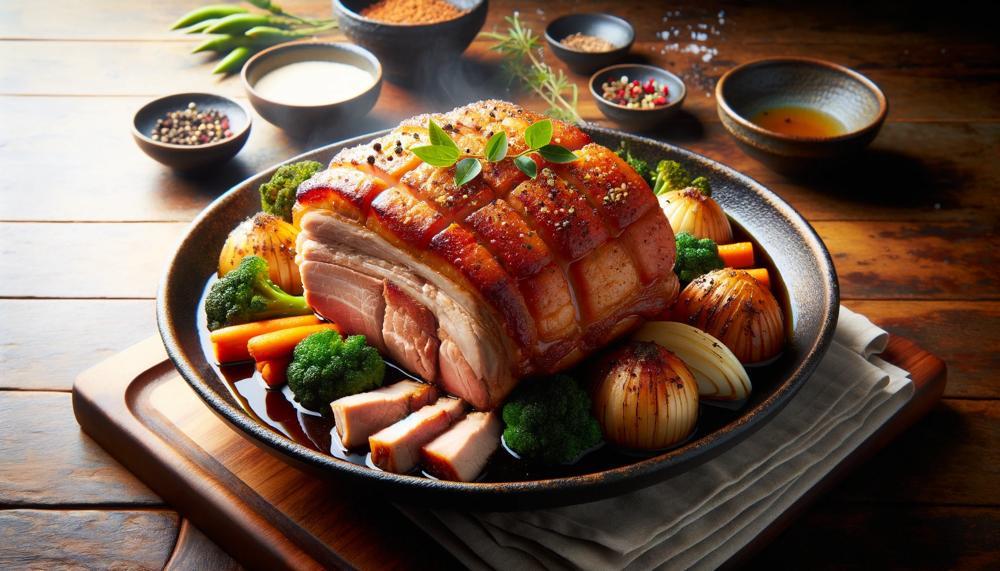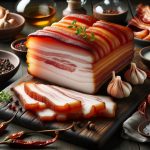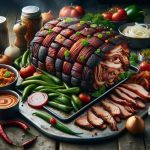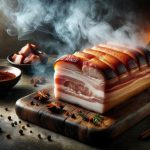Are you up for the challenge of cooking a succulent pork shoulder? This versatile cut of meat may seem daunting at first, but fear not! With the right technique, you can achieve a mouth-watering and tender result every time.
In this blog post, we will delve into one of the most debated topics in pork shoulder cooking: whether to cook with the fat side up or down. Get ready to learn all about it:
- The fat cap on pork shoulder is not just for show – it adds flavor and moisture to the meat.
- When cooking with the fat side up, it renders and bastes the meat as it cooks, resulting in a juicy and flavorful dish.
- However, some argue that cooking with the fat side down creates a protective barrier that prevents drying out.
- Ultimately, whether you cook with the fat side up or down depends on your personal preference and chosen cooking method.
- For slow-cooking methods like smoking or braising, it is best to cook with the fat side up.
- On the other hand, high-heat methods like roasting or grilling call for cooking with the fat side down.
So whether you’re planning a backyard BBQ feast or a cozy Sunday dinner at home, keep these pointers in mind when deciding how to cook your pork shoulder.
Let’s get started on mastering this delicious cut of meat!
Contents
What’s the Difference Between Pork Shoulder and Pork Butt?
When it comes to pork, the slight variations between pork shoulder and pork butt can make a big difference in your dish.
These differences include the location of the cut, fat content, and cooking method, all of which can greatly impact the tenderness, flavor, and overall outcome of your meal.
Location of the Cut
Pork shoulder is taken from the thinner end of the pig’s shoulder, while pork butt comes from the thicker, triangle-shaped end.
This distinction in location results in variations in fat content and muscle distribution between the two cuts.
Fat Content
Pork butt has a higher amount of marbling and connective tissue compared to pork shoulder.
This makes it ideal for slow cooking methods like barbecuing and stewing because the fat and connective tissue break down during cooking, resulting in a tender and succulent meat.
On the other hand, pork shoulder has less fat and is better for dishes where the meat needs to hold its shape when sliced or chopped, such as roasts or sandwiches.
Cooking Method
Due to their differences in fat content, pork butt and pork shoulder require different cooking methods to achieve optimal tenderness and flavor.
Pork butt is best suited for low and slow cooking methods like barbecuing, smoking, or braising. The high amount of fat and connective tissue in this cut breaks down during long cooking times, resulting in a melt-in-your-mouth texture.
On the other hand, pork shoulder can be prepared using various techniques such as roasting, grilling, or pan-frying. It is crucial to cook this cut to the proper temperature to avoid overcooking and drying out the meat.
What Is the Fat Cap?
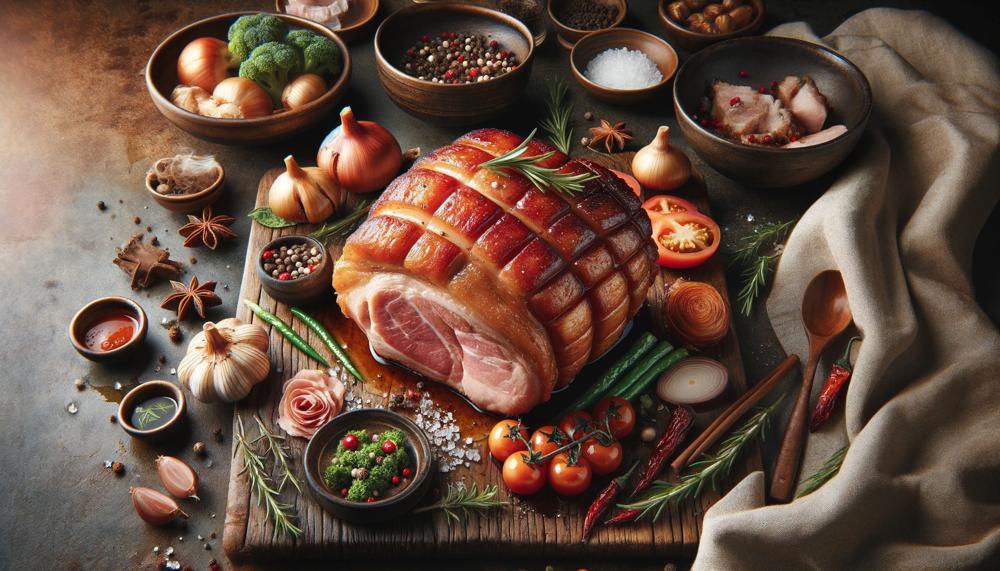
The fat cap, a layer of fat on a pork shoulder, serves as a shield for the meat during cooking. This layer keeps the meat moist, tender, and flavorful while acting as an insulator to regulate temperature. It also adds juiciness and flavor to the final dish.
When cooking pork shoulder, it’s crucial to place the fat cap on top of the meat with the fat facing upwards. This allows the fat to slowly melt and drip down onto the meat, basting it as it cooks. If placed on the bottom of a smoker or grill, direct heat can cause the fat cap to burn, resulting in a dry and tough pork shoulder.
The amount of fat on a pork shoulder can vary depending on the cut and quality of the meat. Generally, a thicker fat cap is preferred as it renders down and adds more flavor and moisture. However, if you have a thinner fat cap, you can still achieve delicious results by trimming excess fat before cooking.
To ensure evenly cooked and flavored meat, avoid flipping or moving the pork shoulder too much during cooking. This can disrupt the melting and basting process.
Overall, understanding the purpose and effects of the fat cap is crucial in creating a tender and juicy pork shoulder. Follow these tips and impress your guests at your next BBQ gathering with a perfectly cooked dish.
| Advantages | Disadvantages | Helpful Hints |
| 1. Keeps meat tender and juicy | 1. Can cause flare-ups if placed on direct heat | 1. Place fat cap with fat facing upwards on meat |
| 2. Adds flavor and juiciness | 2. Can result in burnt and crispy pork shoulder if placed on bottom of smoker | 2. Avoid flipping or moving pork too much while cooking |
| 3. Regulates temperature of the meat | 3. Trim excess fat if thin fat cap |
How Do You Use Pork Fat Trimmings?
Sausages and Patties:
Pork fat trimmings can be used in a variety of ways, one being grinding and seasoning them to create sausages or patties.
These delicious treats can be cooked in various ways, whether it be grilling, pan-frying or baking.
Pates:
For a simple yet flavorful dish, try making pates by baking ground pork trimmings with other ingredients until firm.
This delectable appetizer can also be spread on crackers or bread for a tasty snack.
Lard:
With the use of pork trimmings, you can make your own lard at home. This clarified pig fat adds a rich flavor to dishes and can be used in cooking or baking.
Pork Rinds:
Looking for a crispy and savory snack? Try making pork rinds by boiling, baking, and frying pieces of pork skin.
These can be seasoned and enjoyed as a low-carb alternative to chips or crackers.
Minced Pork:
Another versatile way to use pork fat trimmings is by mincing them for use in various dishes such as rice dishes, meatballs, wontons, dumplings, and casseroles.
This adds both flavor and texture to meals.
Soup Stock:
For a flavorful base for soups or stews, try making pork stock by boiling the trimmings with bones and vegetables for hours.
This hearty stock adds depth to any dish.
In conclusion, incorporating pork fat trimmings into your cooking is a cost-effective way to add flavor and variety to meals.
However, it is important to consume saturated fat from pork in moderation to avoid health issues.
Pork Shoulder Fat up or Down
While some swear by the fat side up approach, claiming it results in a more flavorful and moist meat, others dismiss it as a mere myth.
The truth is, both methods have their pros and cons. Cooking with the fat side up can help baste the meat and create a crispy layer, but it can also lead to flare-ups and wash away the BBQ rub.
On the other hand, cooking with the fat side down allows for slow and even cooking, while also adding a rich texture from the rendered fat. Ultimately, the decision of how to cook your pork shoulder should be based on personal preference.
Advantages of Cooking Pork Shoulder Fat Side Up:
- Basting: When cooking pork shoulder with the fat side up, the melting fat serves as a natural basting agent, keeping the meat moist and infusing it with flavor.
- Crispy Layer: The exposed fat on top of the meat can create a deliciously crispy layer when cooked at high temperatures.
- Visual Appeal: Cooking pork shoulder with the fat side up can result in an aesthetically pleasing dish, as the crispy layer adds texture and depth to its appearance.
Possible Disadvantages of Cooking Pork Shoulder Fat Side Up:
- Flare-Ups: The melting fat can cause dangerous flare-ups, resulting in unevenly cooked meat.
- Washed Away Rub: As the fat melts, it can also strip away any BBQ rub or seasoning that was applied on top of the meat.
Benefits of Cooking Pork Shoulder Fat Side Down:
- Slow and Even Cooking: When placed fat side down, the pork shoulder is shielded from direct heat and cooks slowly and evenly.
- Rich Texture: The rendered fat infuses the meat with a luxurious texture, producing a more flavorful end product.
- Safety: Cooking with the fat side down reduces the risk of flare-ups and potential safety hazards.
Conclusion
Let’s sum up by saying that while roasting a juicy pork shoulder can appear difficult, done correctly, the meal can be very soft and delicious. This process becomes much more challenging when considering the age-old dispute over frying fat side up or down.
But after learning the differences between pig butt and shoulder, as well as the function of the fat cap and inventive uses for trims of hog fat, we’ve come to the conclusion that each approach has advantages and disadvantages of its own.
Ultimately, the choice should be dependent on your preferred cooking technique and personal taste, whether you want to cook with the fat side down for a slow and even cook or baste and fry for a crispy layer.
Try a few different things and see what suits you the best. After all, the key to perfecting this succulent piece of meat is to include your own special flair.

